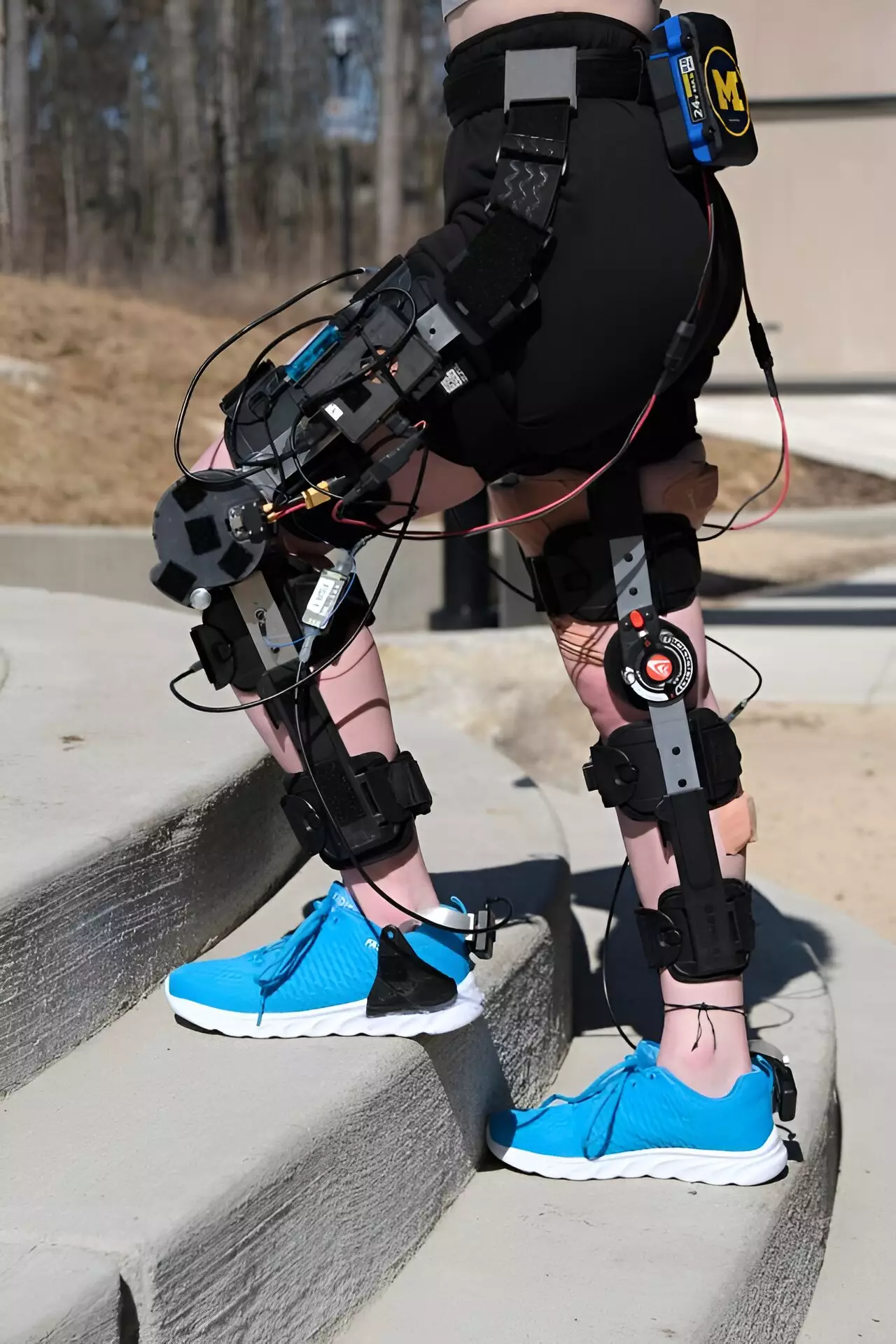In a pioneering study at the University of Michigan, a novel approach to workplace safety has emerged through the development of knee exoskeletons. Constructed using commercially available knee braces equipped with drone motors, these devices are designed to combat fatigue during lifting and carrying tasks. The research, documented in the journal Science Robotics, highlights not only the innovative technology behind the knee exoskeletons but also their potential to reshape safety protocols in physically demanding jobs like construction and manufacturing.
Traditional aids such as back braces have been widely adopted in industries where lifting is commonplace. These devices, however, often focus primarily on supporting the back, assuming a lifting posture that can lead to injuries. Conversely, the knee exoskeletons introduced by the Michigan team take a different stance by reinforcing the strength of the legs, particularly targeting the quadriceps muscles, which are crucial in maintaining proper lifting techniques. According to Robert Gregg, a professor of robotics at U-M, this innovative approach allows workers to retain a safe lifting posture even when exhausted—a significant shift from existing industrial practices.
The team conducted experiments involving ten participants tasked with lifting a 20-pound kettlebell in various scenarios, including standard lifts from the ground, navigating inclines, and managing stairways. The results were compelling: participants equipped with knee exoskeletons demonstrated remarkable improvements in posture and speed, lifting only 1% more slowly when fatigued compared to the considerable 44% decrease in speed experienced without the device. This improved efficiency underscores the importance of maintaining correct posture while keeping pace with demands, particularly in high-pressure environments like assembly lines.
Feedback from those who tested the exoskeletons revealed predominantly positive sentiments, reflecting user satisfaction. While participants expressed high levels of contentment regarding the device’s performance, they reported more mixed feelings during flat-ground walking—a task requiring less assistance from the quadriceps. This reaction aligns with the minimal support needed during straightforward maneuvers. Interestingly, the data also showcases how critical user comfort remains in technology designed for repetitive labor.
One of the standout features of these knee exoskeletons is the integration of sophisticated motor technology and advanced software. The motors are designed to facilitate natural knee movement, allowing users to walk without constraints. Real-time feedback mechanisms enhance the intelligence of the exoskeleton through software that continuously assesses the angle and position of the knee joint as well as the force exerted via sensors in the user’s footwear. This comprehensive data collection occurs 150 times per second, enabling the device to adjust seamlessly to various tasks.
Unlike traditional exoskeletons that might follow predefined actions, the Michigan team’s approach uses a blend of physics models and machine learning, allowing for greater adaptability to the user’s needs. This feature becomes especially useful as workers transition between different lifting tasks throughout their day, minimizing the risk of injury stemming from abrupt adjustments in movement.
Despite being prototypes that cost approximately $4,000 per pair, the potential for cost reduction through mass production could bring the price down to around $2,000. This affordability may prove impactful in promoting wider adoption of the technology, thus bolstering workplace safety across various labor sectors. Additionally, the research team, recognizing the importance of commercialization, has sought patent protection and is actively searching for partners to facilitate the technology’s market introduction.
The development of knee exoskeletons by the University of Michigan presents a significant advancement in enhancing worker safety and efficiency. By focusing on the legs rather than the back, these devices offer a unique solution to mitigate fatigue-related injuries in industries that rely heavily on lifting and carrying. As further testing and development progress, there is a strong possibility that these knee exoskeletons could redefine acceptable lifting practices, fostering a safer and more efficient work environment. The ongoing commitment to refining this technology signals a promising future for workplace innovation and worker protection.


Leave a Reply